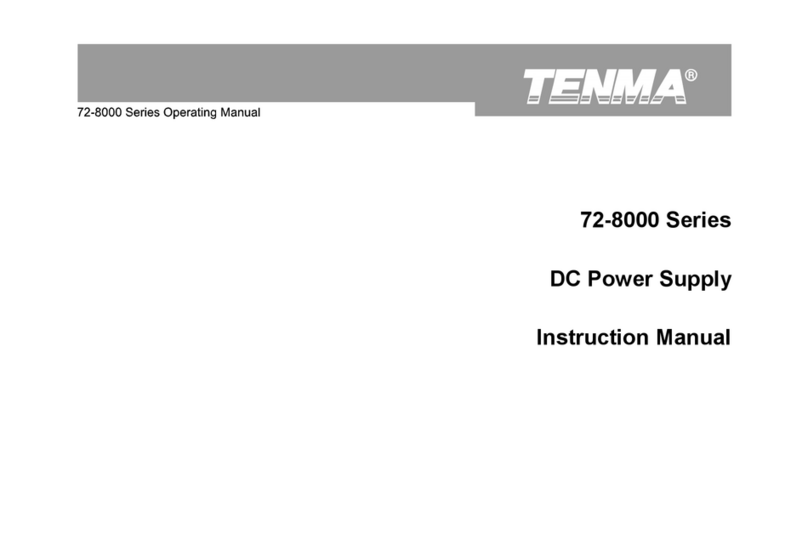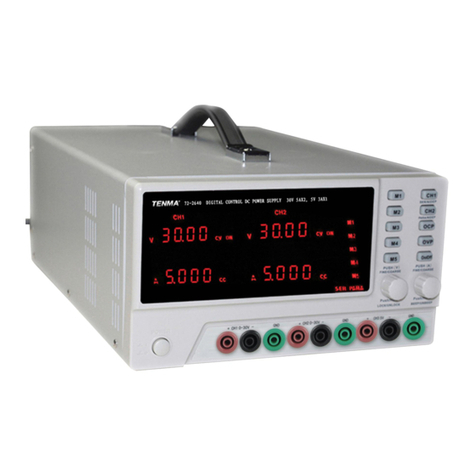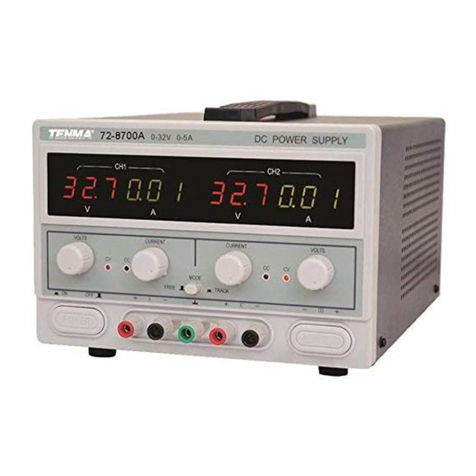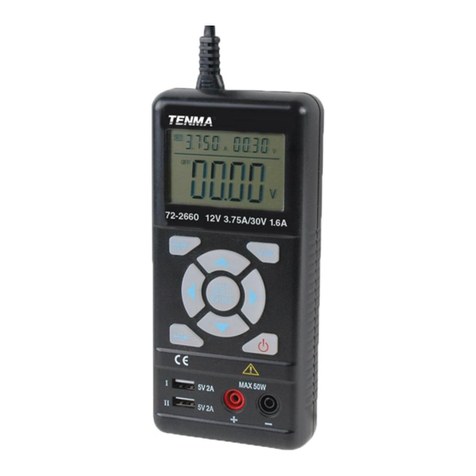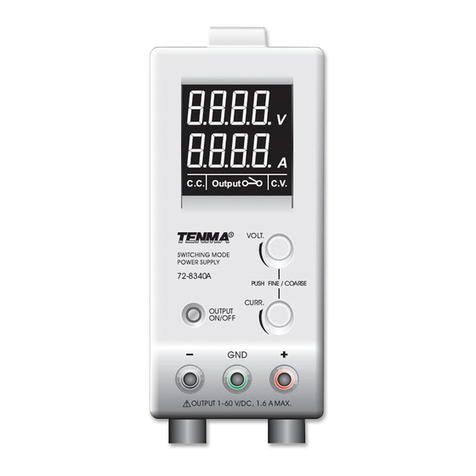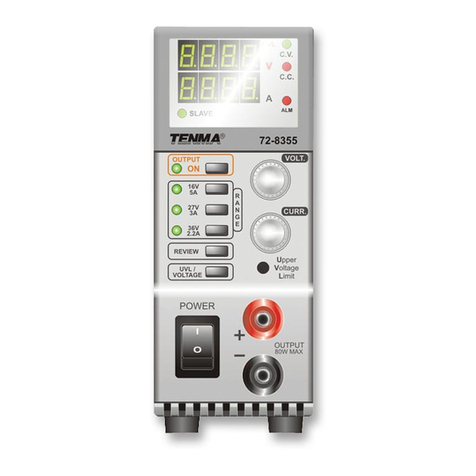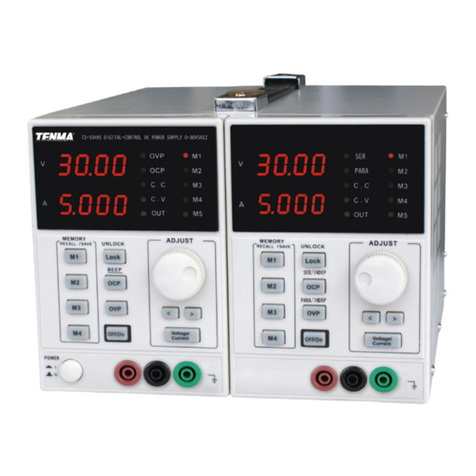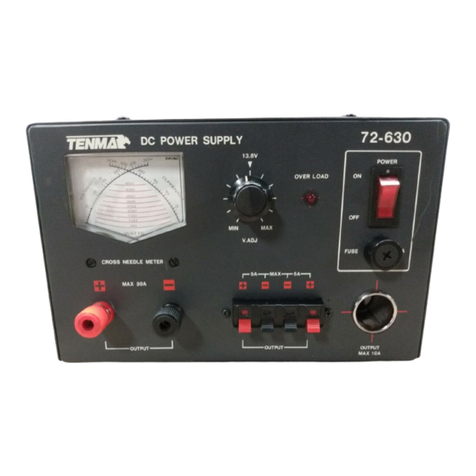
V/A
12
V
A
3
When C.V. LED lights on, it is
in the mode of zero calibration.
Press the buttonto switch
voltage zero calibration and current
zero calibration. When voltage meter
blink , it is in the mode of voltage zero
calibrationwhile it is in the mode of
current zero calibration if current
meter blinks.
Press and hold the button
“M4”, and thenpress the
button “ POWER ” to swi tch on .
Benchtop multimeter with mV display;
Ammeter with mA display.
When C.C LED lights on, it is in the
mode of amplitude calibration .
Press the buttonto switch
voltage amplitude calibration and
current amplitude calibration.
When voltage meter blinks, it is
in the mode of voltage amplitude
calibrationwhile it is in the mode
of current amplitude calibration if
current meter blinks.
Press the button "M4" again, and then it
is into the mode of amplitude calibration.
Benthtop multimeter with mV display;
Electronic load with mA display and max display current 5A.
Calibration instruments: benchtop multimeter with 6.5 digits
display, & 5A electronic load with mA display.
Calibration condition: Preheat for 2 minutes after switching
on.
Being into calibration mode: press and hold the button “M4”,
and switch on at the same time (see picture 1) until voltage
displays blink. At this time, C.V LED lights on, which means the
power supply is in the mode of zero calibration(see picture 2).
1. Voltage Zero Calibration: connect the positive pole and
Negative pole of the multimeter leads into the output
terminals respectively. Then, watch the voltmeter and adjust
the knob to make the multimeter display in the range 0V-
5mV. After that, the zero calibration is over. Press the button
“M1” to save the calibration value.
2. C u r r e n t Z e r o C a l i b r a t i o n : p r e s s t h e b u t t o n
VOLTAGE/CURRENT, and the current display of the power
supply blinks. Connect amperemeter to adjust the current
value in the range 0mA -1mA. Then press the button “M1” to
save the calibration value.
3. Voltage full-range calibration:adjust voltmeter into the
stall of voltage test. Press the button “M4” again and then
C.C LED lights on, which means now it is in the full-range
calibration. And then the voltage display meter blinks, turn
the knob to adjust the multimeter display in the range
between 30.00V-30.01V. And then press the button “M1” to
save the calibration value.
4. C u r r e n t f u l l - r a n g e c a l i b r a t i o n : p r e s s t h e b u t t o n
VOLTAGE/CURRENT, and then the current display meter
of the power supply blinks, which means it is in the mode of
current calibration. At this time, connect the amperemeter(or
electronic load), and then adjust the current to 5.000A±5mA.
After that, press the button “M1” to save the calibration
value.
5. Switch off, and then restart the power supply. The
calibration ends.
6. As for dual and triple channel power supplies, after channel
1 is calibrated, repeat the procedures above to calibrate
channel 2, the same calibration way as that of channel 1.











